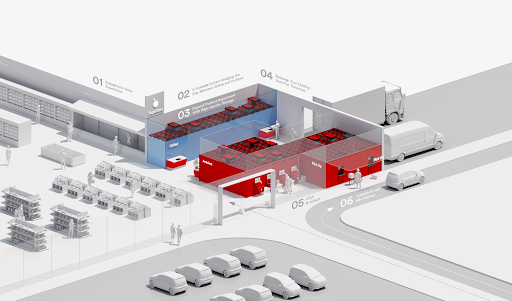The retail industry is migrating online, and there is no turning back. During the coronavirus outbreak, consumers purchased everything from toilet paper to coloring books, computers to bread machines via e-commerce.
Modern buyers anticipate the shortest possible time between clicking “Buy Now” and receiving the goods at their doorstep.
Even if they were unaware at the time, businesses quickly devised micro-fulfillment strategies in reaction to the pandemic. Micro Fulfillment strategies include kerbside delivery, buy-online-pick-up-in-store, and home delivery in two days or less.
Existing systems’ adaptation to expansion has been disruptive and costly. The microfulfillment centers are insufficiently adaptable to keep up with swiftly changing consumer needs.
What is the meaning of micro-fulfillment?
Micro-fulfillment is a technique that positions tiny warehouses in heavily populated urban areas closer to the consumer in order to improve delivery times.
In recent years, the two-day or shorter shipment has been the standard. If you’re not Amazon or Walmart, it’s difficult to stay up with the competition. In some cities, same-day delivery has become the standard.
Last-mile expenditures account for 41% of a product’s overall supply chain costs. Micro-fulfillment aims to shift inventory and fulfillment as near to the consumer as feasible in order to make smaller shops more competitive in terms of shipping delays.
Benefits of warehouses and micro fulfillment centers
The advantages of micro warehousing may exceed the disadvantages for some brands, depending on their objectives.
Faster picking
When a customer submits an online order, the clock begins to tick. The speed of product selection is the first step in expeditious order fulfillment. Using picking robots enables eCommerce businesses to keep up with consumer demand for speedy and even same-day shipping.
Depending on the product category, the effectiveness of choosing robots varies, but in many instances, they can finish order fulfillment 10 times faster than people.
Accelerated order fulfillment
As previously said, the majority of micro fulfillment facilities are highly automated. For instance, choosing lists are prepared automatically to improve the process, and the procedure itself is frequently performed by machines where applicable. This expedites order fulfillment dramatically, guaranteeing that orders are shipped as soon as they are received, along with ensuring the safety of packages.
Enhanced sales
By providing fast and inexpensive shipping through a mini fulfillment center, you eliminate two of the most typical obstacles to consumers purchasing products: poor shipping speeds and high shipping charges.
As more people end up converting, you drive more sales. A rise in sales results in an increase in revenue, which enables you to expand your firm.
Improved workplace security
Because tasks are transferred to picking robots and other autonomous devices, warehouse automation is safer. This technique reduces the danger of injury and accidents associated with high-up product retrieval and heavy lifting and carrying.
It takes approximately 60 minutes to pick up an online grocery order, making the section a failure for merchants.
The picking time at the fulfillment centre is reduced to around six minutes. These faster order fulfillment centres can be included within the existing structures of supermarkets. Enabling a hyperlocal function, hence decreasing the expense of last-mile delivery.
Conclusion
Micro-fulfillment centres are useful for streamlining fulfillment processes in organizations with small fulfillment requirements and limited resources.
However, it may not be the optimal approach for scaling e-commerce operations and for major organizations that may expedite the delivery experience by outsourcing fulfilment to third-party logistics providers (3PLs). Third-party logistics providers, or 3PLs, can stock enormous quantities of product throughout a vast network of faster order fulfillment centres in order to reduce delivery times. Thus, larger companies can avoid the costly investments associated with traditional fulfillment hubs and the capacity constraints of micro-fulfillment centres.








